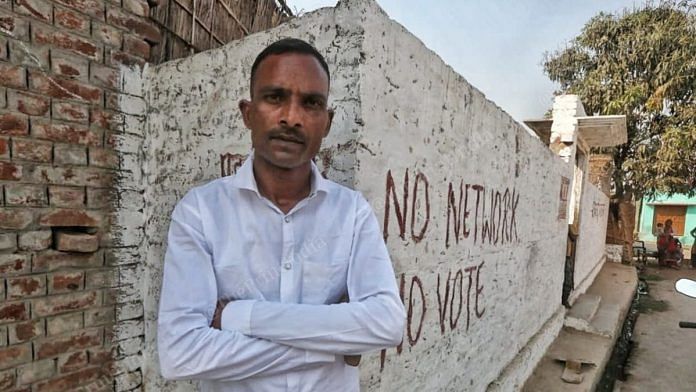Bahraich: No mobile network, a tricky boat ride and dense jungle route to the mainland, and surrounded by Nepal on three sides — the clock seems set back in time in Bharthapur village in Uttar Pradesh.
Along with five more villages close to the India-Nepal border — Kartaniya, Amba, Bardiya, Fakirpuri, and Bisunapur — Bharthapur remains cut off from the dreams of digital India and development.
These villages will go to polls on 13 May.
The only way to reach Bharthapur is a boat ride across the crocodile-infested waters of the Girwa river. Travellers first reach Kartaniya, a village right across the river. Then, they have to travel through the thick of the Katarniaghat jungle for six kilometres to finally arrive at Bharthapur, which lies on the banks of the Kauriala river.
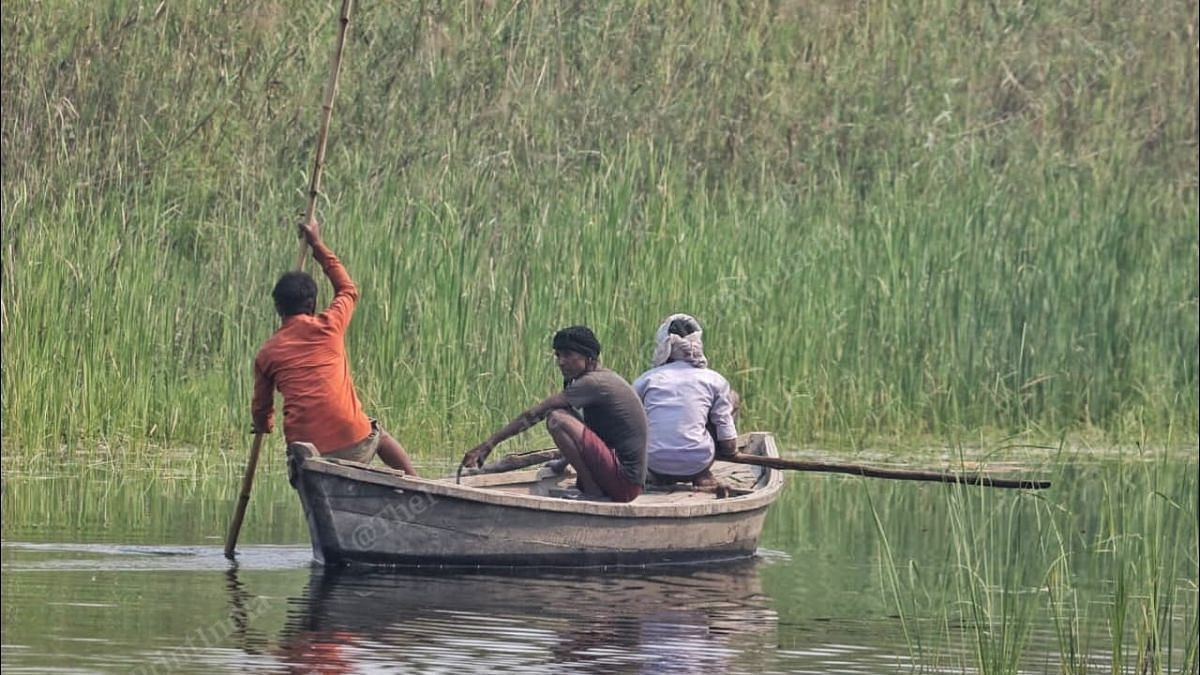
On this side of the Girwa, Amba, Bardiya, Fakirpuri and Bisunapur are also located. While Bharthapur does have a feeble mobile network, communication blackouts are a permanent fixture in these four villages.
With the Lok Sabha elections around the corner, slogans like “No tower, No power” and “No network. No vote” have appeared on the walls in these four villages. The residents have joined arms over the past few months, warning of an election boycott if they do not get a mobile phone network.
Bringing these four villages, as well as Bharthapur and Kartaniya, all of which are a part of the Bahraich district of Uttar Pradesh, on the grid is a challenge. The better part of this area falls under the Katarniaghat Wildlife Sanctuary — a mosaic of sal and teak forests, lush grasslands, swamps and wetlands. The forests are home to gharials, tigers, rhinos, elephants, Gangetic dolphins, swamp deer, and vultures, making this terrain treacherous.
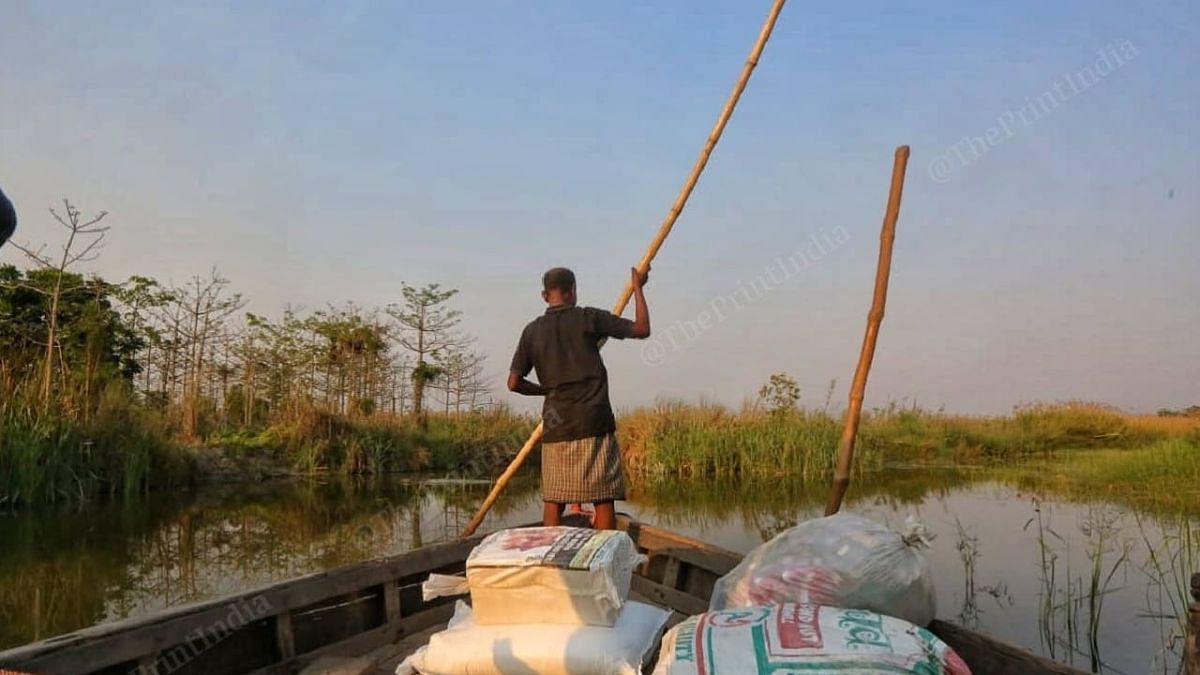
“The forest department also zealously guards its terrain, so the development work is also not very easy — it’s not easy to cut roads in this area… it’s not easy to set up mobile towers, so things which would bring them (the villages) closer and on the grid are not so easy to effect,” IPS Vrinda Shukla, Superintendent of Police (SP), Bahraich district, told ThePrint.
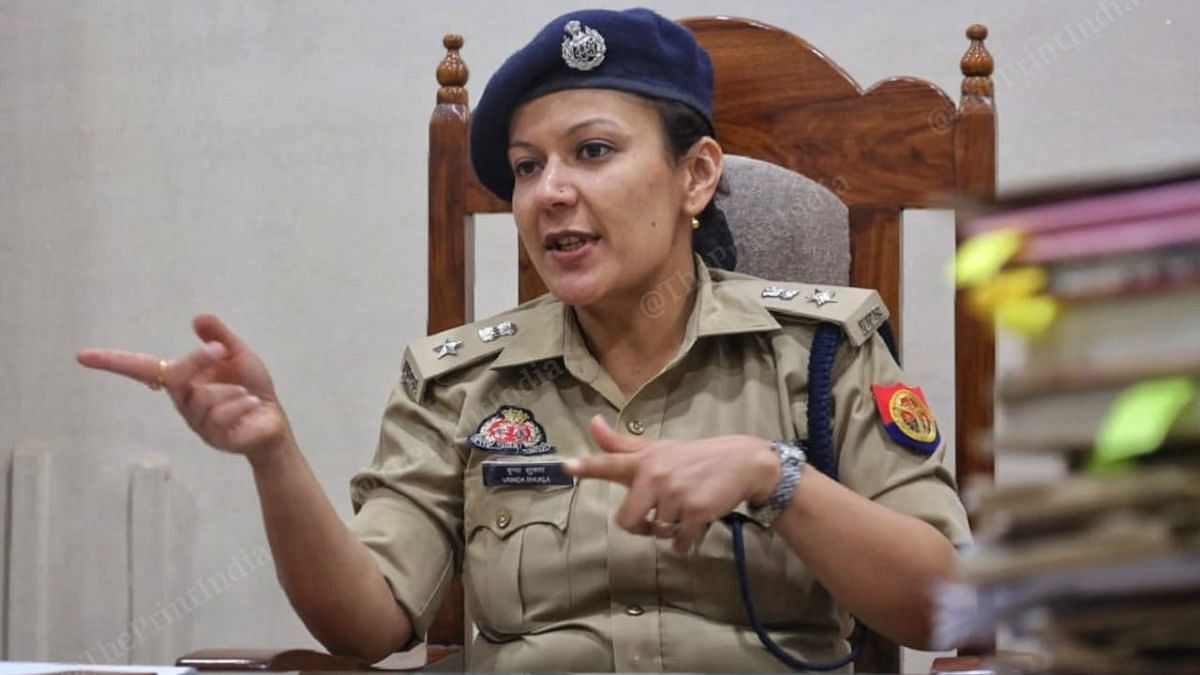
In such a scenario, conducting elections in these villages is a different story altogether, involving special backpack wireless handsets, handheld communication sets, a “relay” system of communication during the polls, and polling parties — including polling officers, security officials and magistrate — travelling on boats and walking through the jungle.
Also Read: ‘What if I die or become disabled?’ In UP ‘village of jawans’, few want to join Army as Agniveer
Network from Nepal
The four villages of Amba, Bardiya, Fakirpuri and Bisunapur predominantly house people from the Tharu Scheduled Tribes, and a small Muslim population, as well.
These villages, situated as close as two kilometres from the India-Nepal border, do not get any mobile network from India but, sometimes, do get it from Nepal.
“If somebody gets sick suddenly in these villages, calling the ambulance becomes really difficult. People die because of it,” Anees Ahmed, a resident of Bardiya village, said.
“We have to resort to using (the) Nepali network. Or, (since) the boundary is close, we go there and inform them (Nepal authorities),” Ahmed further said, adding, “We are like wild animals here. We have absolutely no facilities.”
In the age of digital India, the lack of mobile networks in an area surrounded by dense jungle cuts the residents off all educational, health and livelihood resources. Any information or calamity is often communicated on foot or cycle.
“Our condition is worse than refugees… Or, just declare that we are not from your country,” Akbar Ali, a resident of Bardiya village, told ThePrint, standing in front of the lone school in the village, which turns into the polling station during elections.
The lack of a mobile network cuts off the village from social ties too. “After a long day at work, all of us women think about talking to our children or our husbands, who live away (from us), but we cannot. We have to walk far in the cold at night to find some network somewhere,” said Suman Singh from Fakirpuri village.
No OTP
In the rest of the country, residents get a one-time password or an OTP (One Time Password) to avail of all sorts of services. However, when Shravan Kumar from Bardiya village had to take his daughter to a medical college for surgery, he couldn’t get the OTP needed for registration, leading to a nightmarish experience.
“We need a registration for (getting someone admitted to the) medical college. The registration is online. But, because of the lack of a (mobile phone) network, we could not get an OTP. I had to send my mobile phone to Bahraich, and it took a week just for the registration,” he said.
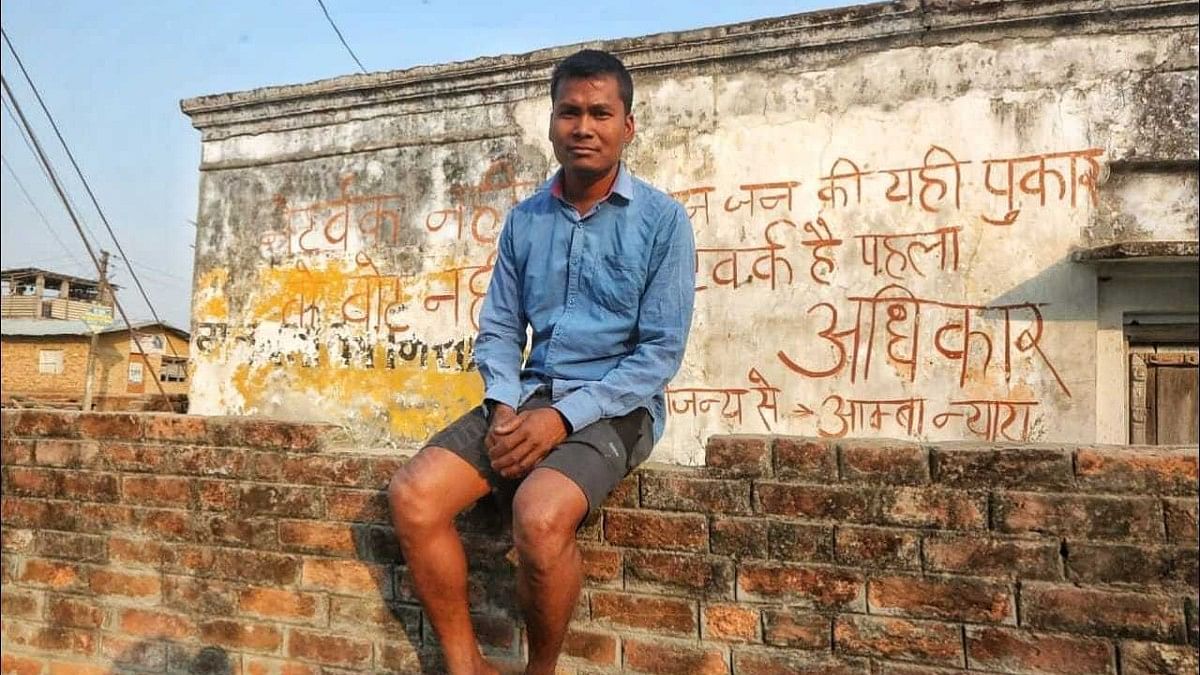
Amba village has 1,832 voters, Bardiya 1,984 voters, Fakirpuri 1,584 and Bisunapur 1,324, according to the police authorities. The pradhans of these villages came together three to four months ago, joining forces for the demand for a mobile network.
“If we want somebody to get a pension, or get their Aadhaar card made, or link their mobile number to their bank accounts, they cannot do any of this… If somebody has to deliver a child, we struggle to get them to a hospital. So, this time, we decided to boycott the elections because, we thought, that’s the only way politicians will listen to us,” Kumar, who is also leading the protests from the front, said.
There’s a lone BSNL tower in the area, and it was fixed just last month, leading to a slight reprieve in the village, but the villagers said their demand for private networks will continue.
“We are not happy yet. Once the network starts working, we’ll be happy…And if the network comes, we will vote,” says Shyam Lal, the pradhan of Bardiya village.
“The entire Amba Nyay Panchayat (for dispute resolution at the village level) agrees that till we don’t get a tower, we won’t vote,” Kumar added.
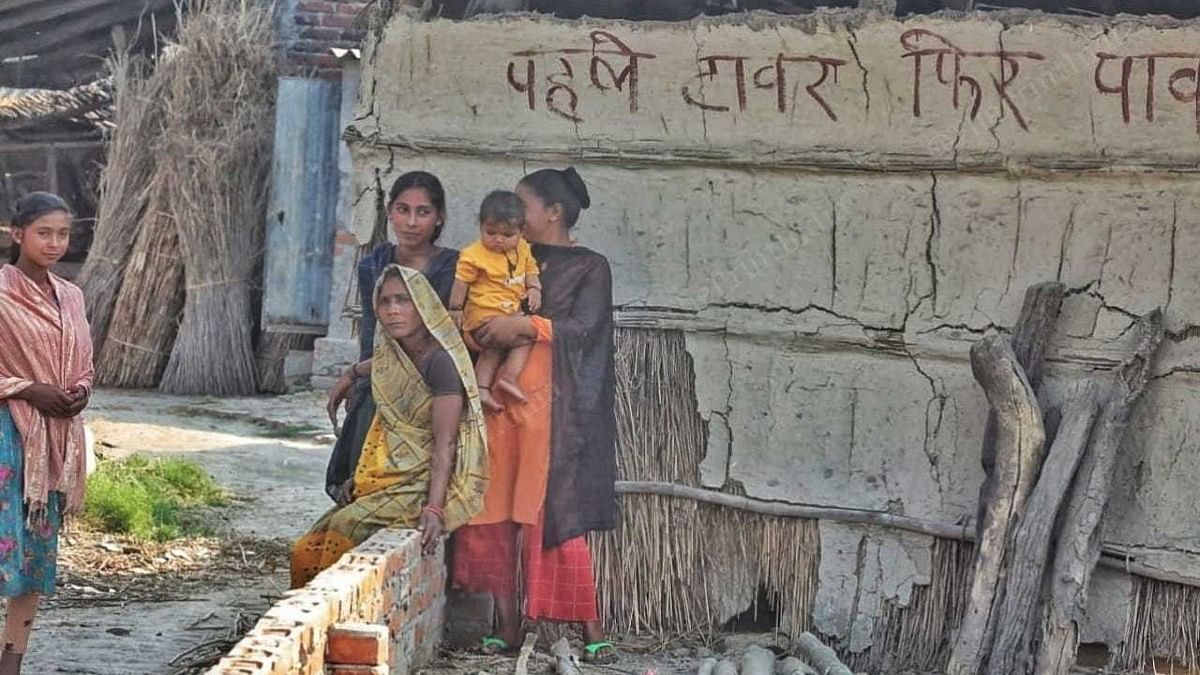
No teachers, no doctors
Bharthapur village is a patchwork of thatched roofs, with the primary school, which doubles up as the polling centre, as the only pucca construction in the village.
Standing in front of one of the thatched-roof houses, octogenarian Kalawati can be heard wailing: “We are tormented by sorrows… Nobody is being able to understand our pain.”
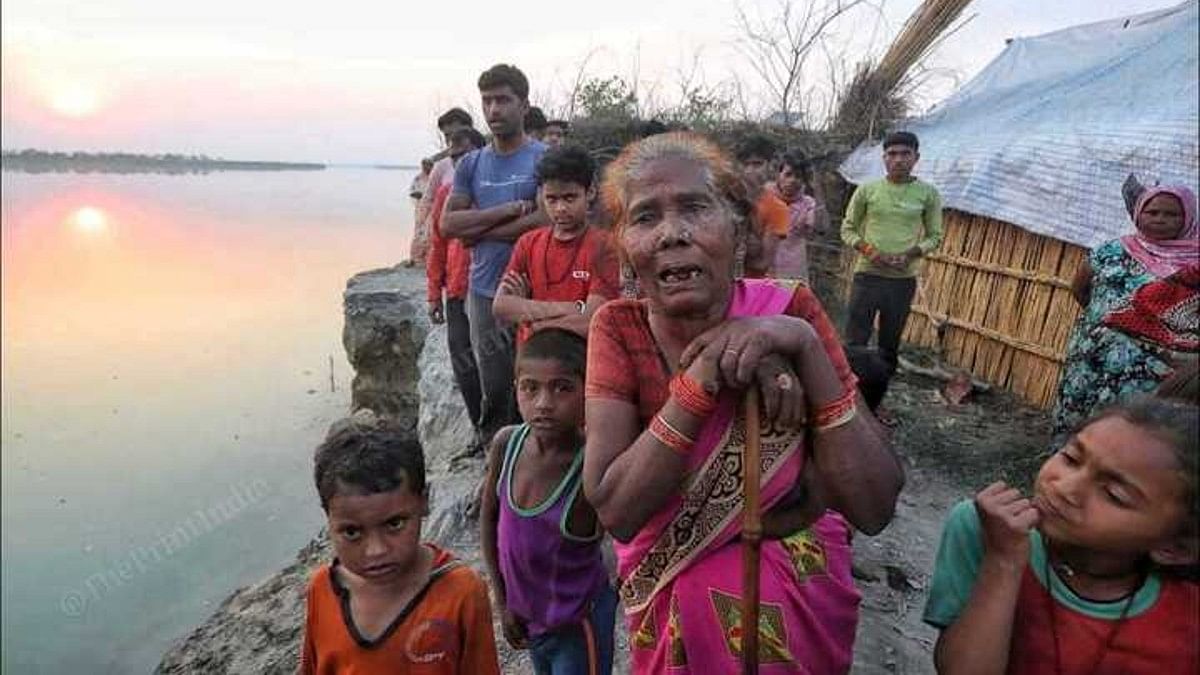
In Bharthapur, teachers often don’t turn up for classes because they also have to scale the river and the jungle to reach the village.
The nearest functioning government hospital is over 50 kilometres away, in Motipur. Bisunapur, around 23 kilometres away also has a hospital, which, however, does not usually have doctors.
The houses do not have electricity and rely on small solar panels for daily power.
The village women often miss their monthly free ration runs, so now the authorities get ration to the village via the water and jungle route.
The entire terrain leaves the six nearby villagers in despair. Bharthapur also gets flooded every year by the Kauriala river.
“We have rivers and jungles on all four sides. There is no light, awas (house), washroom, or hospital. Our children have no future here. Their lives are destroyed,” villager Lalta Prasad Maurya told ThePrint.
Surrounded by wildlife on all sides, the animal-human conflict in Bharthapur adds an extra layer of complexity to the lives of its residents, with wild tuskers often seen roaming in the jungles.
“When someone leaves this village, they wonder if they would come back alive or would be killed by an elephant on the way,” resident Dudhnath Maurya said, adding that they have received very little help from the local MLAs.
Lalta Prasad chimed in, saying, “The nearest hospital is 50 km away. If somebody gets sick, they die on the way while crossing the river. It takes two-three hours to cross the river sometimes. No ambulances can come here.”
The Kauriala river has been eating up the village land every few months. Efforts to resettle the inhabitants of Bharthapur village have been ongoing for several years now, and these efforts are gaining steam, sources told ThePrint. This election, hence, might just be the last one for the village.
Dudhnath claimed they have been assured of being resettled after the elections, and they are gearing up for the voting.
“All of us will vote. We are in India, we will follow the policies of the country, so we will vote,” he added.
Bharthapur is the first polling centre and polling station in the district. The Bharthapur and Kartaniya villages together account for over 500 votes. In total, these six villages have over 7,200 eligible voters, according to the police authorities.
Porous border, no communication
SP Shukla said that from a policing perspective, the biggest challenge for these villages is the porous border with Nepal.
“We have a boundary of almost 110 km with Nepal and on that long boundary, all we have is forest and fields, so people can easily come through. There are a lot of mechanisms to check any kind of illegal infiltration and trafficking, but these measures can never be absolute in a porous area,” she told ThePrint.
Shukla said the authorities need to make sure that there is no activity to sabotage the elections, and that the law and order situation is not disturbed.
Additionally, the porous border also requires cleaning up of electoral rolls, because it invariably ends up having people from both countries on it.
The second challenge, according to her, is the communication blackout.
“A lot of these villages are off the grid because no Indian telecom provider has a very strong network in this area,” she said, adding that telecom networks from Nepal, sometimes, reach these villages, but the police authorities cannot use that network.
She told ThePrint that since optical fibres cannot be placed through such a thick jungle, a proposal has been sent to the home affairs ministry to set up satellite towers at the Sashastra Seema Bal (SSB) outposts, which are already present all along the border.
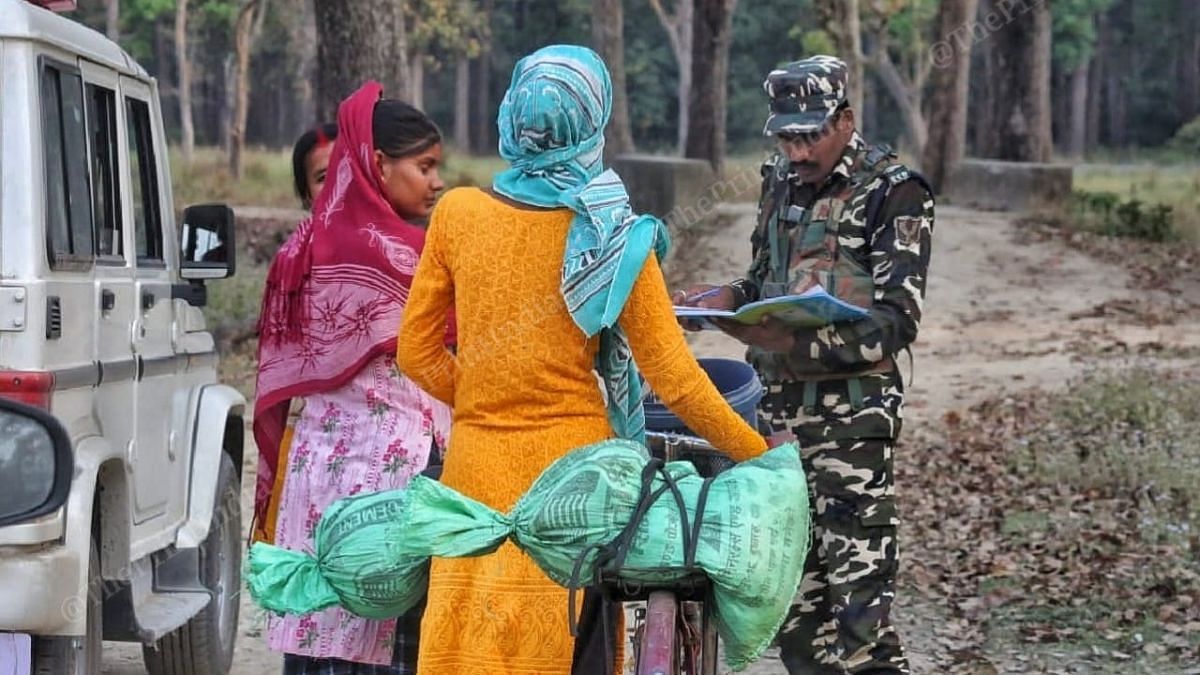
The second biggest challenge for law enforcement authorities is the quick transmission of information in case there is any disruption in the election process, reacting to it and rectifying it as quickly as possible.
Communication shadow areas
These areas are referred to as “communication shadow areas”. Shukla said that there is a massive deployment of forces in these areas during elections, much more than in other places.
“From the day the election was notified, we have set up 13 international border check posts. Those are being manned 24/7 by police personnel, and we’ve tried to put CCTV cameras in every single one of them,” she told ThePrint.
Additionally, the SSB guards the Indo-Nepal border, and their outposts are in the forest and fields.
Wireless sets will be used in the six villages, which fall in the “communication shadow areas”, for smooth relay of any polling or law and order information.
“For this wireless communication… we’re going to be given special backpack wireless sets from the radio headquarters in the police headquarters in Lucknow… We also have a big number of handheld sets,” she told ThePrint, adding that Bahraich will be getting 30 of these special backpack sets.
“We set up a relay system, in which one radio office communicates information to the other and so on,” she explained.
Another police official, on the condition of anonymity, said that Bharthapur will get a static communication set, which will establish a connection with the Sujauli police station — the most accessible one from the village.
“If there’s no network and then a difficult situation arises, the police station will be informed through the static set,” he said.
A static communication set will also be in Bisunapur, helping connect with the Sujauli police station. The three other villages of Amba, Fakirpuri and Bardiya will have backpack sets, establishing a connection with Bisunapur.
Any information from the three villages will reach the Sujauli police station via the backpack sets in Bisunapur, reaching the police control room through the static set.
As for the election preparation in Bharthapur, he said, the polling parties, including the polling officials, security officials, and a magistrate, will take the boat and jungle route to reach the village.
(Edited by Madhurita Goswami)


